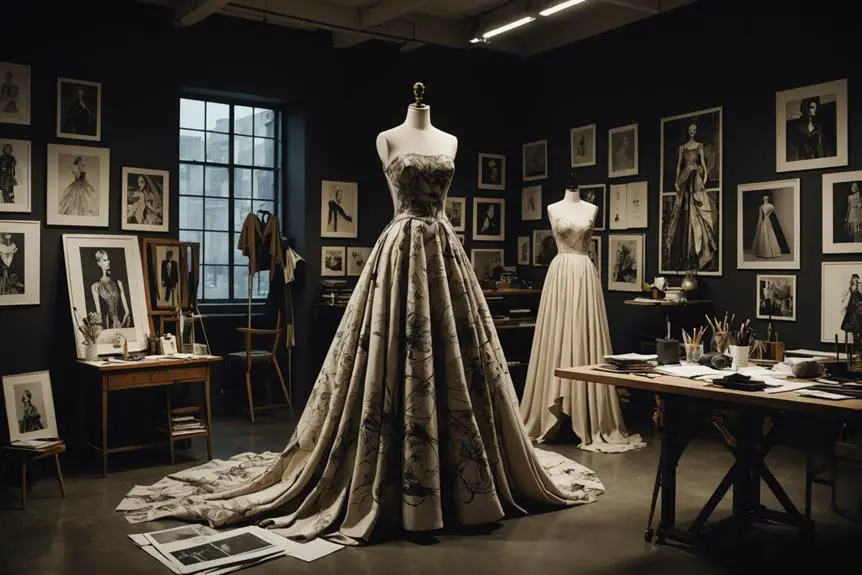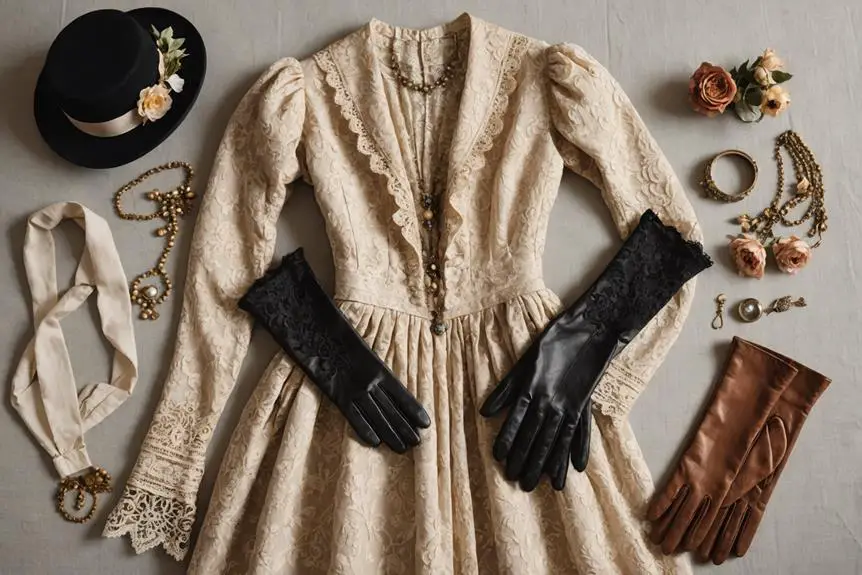In 1992, Alexander McQueen was established by Lee Alexander McQueen, a visionary designer from London. His passion for fashion blossomed early in life as he created outfits for his sisters. After graduating from Central Saint Martins, McQueen made waves with his debut collection, "Jack the Ripper Stalks His Victims," which captivated the fashion world and caught the attention of editor Isabella Blow. Known for his theatrical and innovative designs, he quickly gained a reputation that pushed fashion boundaries. His journey continued with iconic collections and bold runway shows, shaping him into a future legend of the fashion industry. Exciting details await you!
Early Life of Alexander McQueen
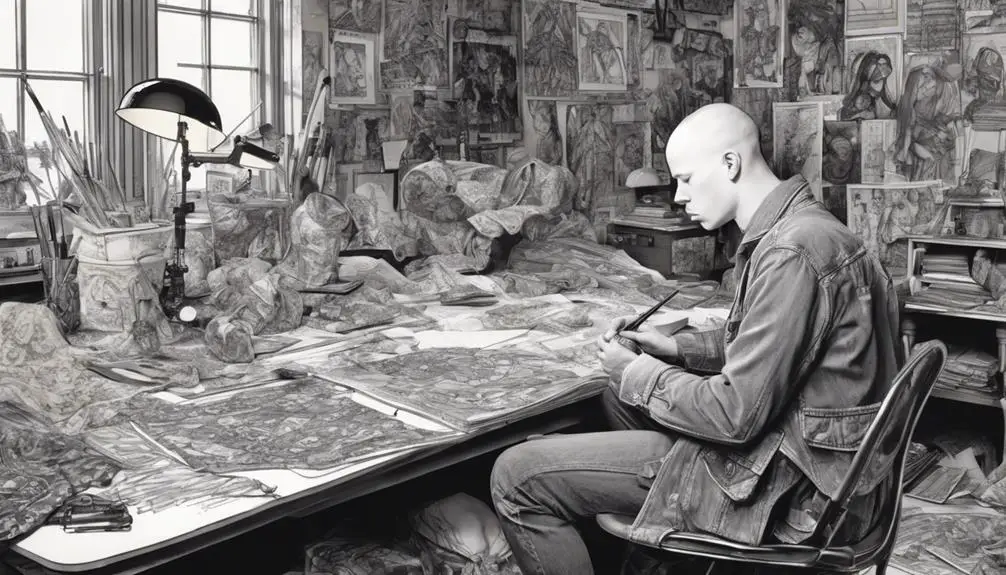
Alexander McQueen's early life shaped his unique perspective on fashion. Born Lee Alexander McQueen in 1969 in Lewisham, London, he was the youngest of six children in a working-class family. Growing up, you'd find him creating dresses for his sisters, which sparked his early interest in fashion. Nature, particularly birds, inspired many of his future designs, revealing the deep connection he felt with the world around him. His upbringing in a vibrant yet challenging environment contributed to his rebellious spirit that later influenced the punk fashion scene, much like the influence of Vivienne Westwood's legacy.
At just 16, McQueen left school with only one O-level in art. Instead of following a traditional academic path, he dove headfirst into the world of tailoring. He began his career at Anderson & Sheppard, one of the most prestigious tailoring houses on Savile Row. This experience honed his skills and fostered a love for meticulous craftsmanship.
After working for various designers, including a brief stint as a pattern cutter for Koji Tatsuno, he found himself in Milan as a design assistant to Romeo Gigli.
In 1990, he enrolled at Central Saint Martins College of Art and Design, a pivotal moment in his journey. His graduation collection, titled "Jack the Ripper Stalks His Victims," not only showcased his talent but also caught the eye of fashion editor Isabella Blow, who purchased the entire collection. This marked the beginning of McQueen's remarkable career, setting the stage for his innovative and sometimes controversial contributions to the fashion world.
Education at Central Saint Martins
After honing his skills in tailoring and gaining valuable industry experience, McQueen took a significant step by enrolling at Central Saint Martins College of Art and Design in 1990. Here, he pursued a Master of Arts degree in fashion design, borrowing £4,000 from his aunt to cover his tuition fees. This investment paid off in ways he could never have imagined.
His time at Central Saint Martins coincided with the early evolution of Alexander McQueen's brand, which later reflected his avant-garde approach to fashion, as seen in his distinctive logo evolution.
During his time at Central Saint Martins, McQueen developed a unique design vision that blended his tailoring background with theatrical elements, which laid the groundwork for his future collections. His graduation collection, "Jack the Ripper Stalks His Victims," drew inspiration from the infamous serial killer and caught the attention of fashion editor Isabella Blow.
Key moments in McQueen's education include:
- Innovative Approach: His MA show in 1992 showcased his groundbreaking ideas.
- Support from Isabella Blow: Her mentorship was essential for McQueen's career.
- Media Attention: His collection received immediate acclaim, solidifying his reputation.
- Tailoring Skills: McQueen's background helped him craft extraordinary pieces.
- Theatrical Elements: He incorporated dramatic presentations into his designs.
These experiences not only shaped Alexander McQueen's artistic identity but also positioned him as a rising star in the fashion industry. His time at Central Saint Martins was a transformative period that set the stage for his future success and influence in fashion.
Launch of Alexander McQueen Label
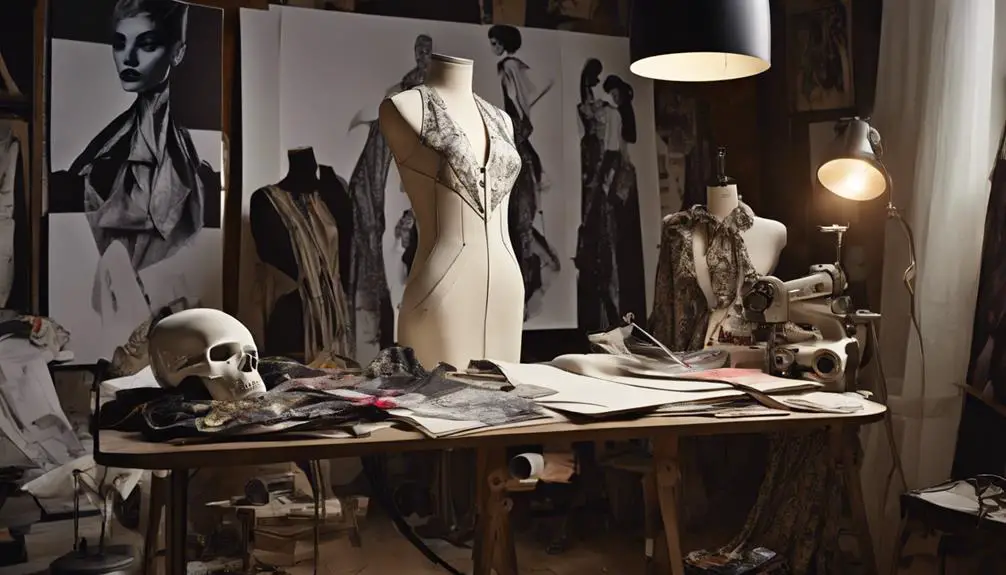
How did a single collection transform the fashion landscape? The launch of the Alexander McQueen label in 1992 marked a pivotal moment in fashion history. Soon after graduating from Central Saint Martins College of Art and Design, Lee Alexander McQueen presented his first collection, "Jack the Ripper Stalks His Victims." This bold debut was entirely purchased by fashion editor Isabella Blow, setting the stage for McQueen's rise as a revolutionary designer.
Following this groundbreaking first collection, McQueen showcased his next piece, "Taxi Driver," in 1993, further solidifying his reputation for innovative design. His work was characterized by avant-garde styles, impeccable tailoring, and dramatic presentations that captivated audiences and critics alike.
The label founded by McQueen quickly gained a cult following, known for pushing the boundaries of fashion. By the year 2000, the brand's success caught the eye of Gucci, which acquired a 51% stake in the company. This acquisition allowed for global expansion, while McQueen continued to serve as the creative director, shaping the brand's unique identity and vision.
Through his daring approach and relentless creativity, McQueen didn't just launch a label; he redefined what fashion could be. His influence is still felt today, as he inspired countless designers to explore new ideas and expressions.
With each collection, McQueen proved that fashion is more than just clothing; it's a powerful form of art and self-expression.
Breakthrough Collections and Shows
From the moment McQueen debuted his first post-graduation collection, "Taxi Driver," in Autumn/Winter 1993, he set the stage for a series of groundbreaking shows that would forever alter the fashion landscape.
His innovative design approach quickly caught the attention of the fashion world, paving the way for what would become the iconic Alexander McQueen brand.
Throughout the years, McQueen pushed boundaries with his breakthrough collections, often blending art and fashion in ways that sparked conversation and controversy.
Key moments include:
- The Spring/Summer 1994 collection, "Nihilism," featuring bruised models in sheer clothing and low-cut bumster trousers.
- The infamous "Highland Rape" collection in 1995, which addressed historical trauma and gender themes.
- The Spring/Summer 1999 "Eye" collection, exploring the West's relationship with Islam.
- The 2001 "Voss" collection, showcasing a naked model in a gas mask inside a glass box, hailed as a pinnacle of fashion theatre.
- The coiled corset from the "Eye" collection, which fetched $807,000 in 2017, highlighting McQueen's ability to merge fashion with cultural commentary.
Each collection demonstrated McQueen's provocative designs and commitment to exploring complex themes, cementing his legacy as a visionary in the industry.
His work not only transformed the runway into a platform for storytelling but also left an indelible mark on fashion history.
Impact of Gucci Acquisition
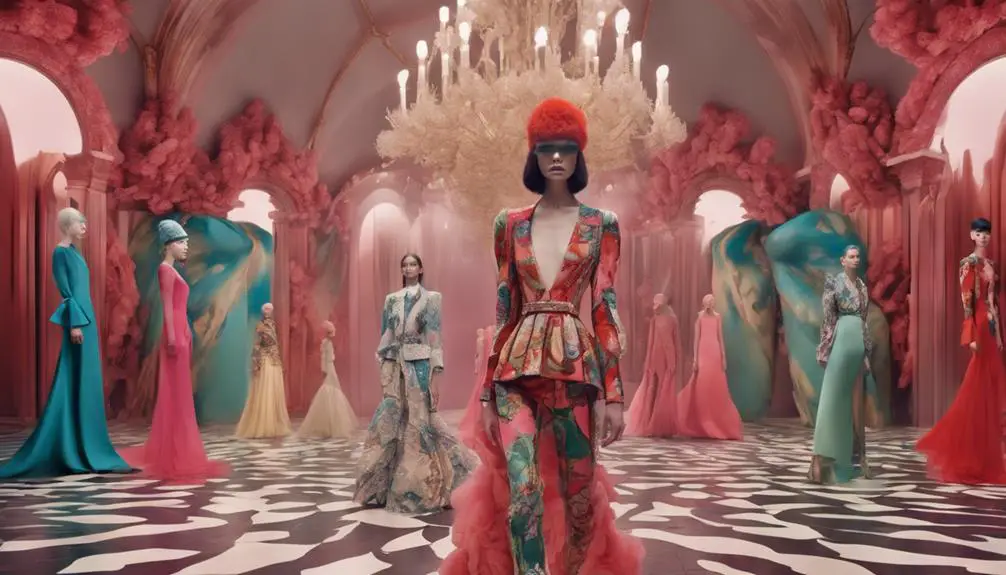
The acquisition of a 51% stake in Alexander McQueen by Gucci in 2000 marked a pivotal moment in the brand's evolution. This partnership considerably enhanced McQueen's global presence and provided much-needed financial stability.
With Gucci's backing, McQueen expanded his brand, opening flagship stores in major cities like New York, Milan, and London. This expansion wasn't just about location; it was about visibility in the luxury fashion market.
Gucci's support also brought valuable resources, enabling innovative marketing strategies and collaborations that elevated the Alexander McQueen label. As a result, McQueen retained creative control, which was essential for his artistic vision.
By 2004, he even ventured into fragrances and menswear, diversifying his offerings while staying true to his unique style.
This strategic partnership solidified McQueen's status in the luxury fashion world. His innovative designs and bold runway shows caught the attention of critics and fans alike, culminating in his recognition as International Designer of the Year in 2003.
This accolade not only celebrated his talent but also underscored the impact of Gucci's acquisition on his career.
In essence, the Gucci acquisition transformed Alexander McQueen from a rising star into a global luxury brand, ensuring his legacy in the fashion industry.
You can see how this partnership laid the foundation for a brand that continues to inspire and captivate fashion enthusiasts around the world.
